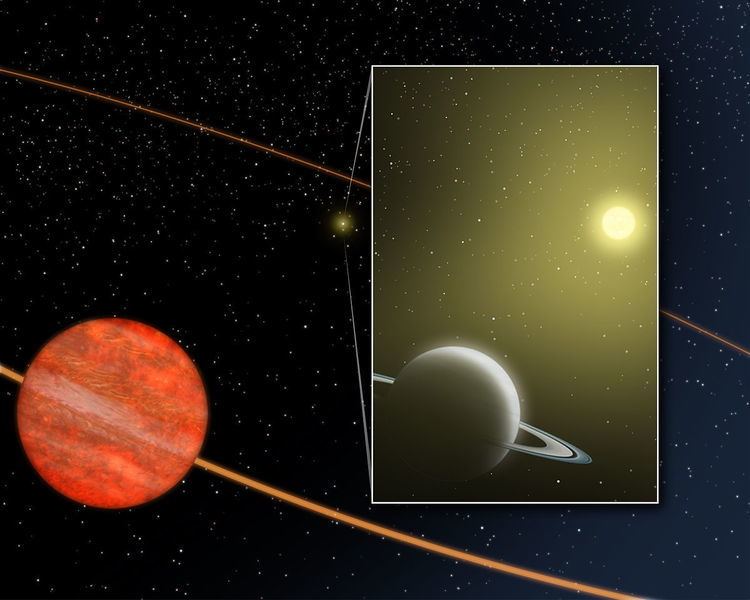Discovery date January 16, 2002 Discovery status Confirmed | Discovery site United States | |
 | ||
Discoverer(s) Butler,
Fischer, and
Marcy et al. | ||
54 Piscium b (HD 3651 b), occasionally catalogued as 54 Piscium Ab in order to differentiate from the brown dwarf in the system, is an extrasolar planet approximately 36 light-years away in the constellation of Pisces. The planet was discovered orbiting the orange dwarf star 54 Piscium. The planet's minimum mass is one fifth that of Jupiter, and it orbits the star in a very eccentric orbit about every two months.
Contents
Discovery
On January 16, 2002, a team of astronomers (led by Geoff Marcy) announced the discovery of an extrasolar planet around 54 Piscium using the radial velocity method, a process utilizes the "wobbling" effect that a star may experience if something is tugging on it, to define the presence of a planetary body. The planet has been estimated to have a mass of only 20 percent that of Jupiter (making the planet around the same size and mass of Saturn).
Orbit and mass
The planet orbits its sun at a distance of 0.28 astronomical units (which would be within the orbit of Mercury), which takes approximately 62 days to complete. The planet has a high eccentricity of about 0.63. The highly elliptical orbit, however, suggested that the gravity of an unseen object farther away from the star was pulling the planet outward. The eccentric orbit became clear with the discovery of the brown dwarf within the system.
Perturbation
The orbit of an Earth-like planet would need to be centered within 0.68 AU (around the orbital distance of Venus), which in a Keplerian system means a 240-day orbital period. In a 2006 simulation with the brown dwarf, 54 Piscium b's orbit "sweeps clean" most test particles within 0.5 AU, leaving only asteroids "in low-eccentricity orbits near the known planet’s apastron distance, near the 1:2 mean-motion resonance". Also, observation has ruled out Neptune-class or heavier planets with a period of one year or less; which still allows for Earth-sized planets at 0.6 AU or more.
